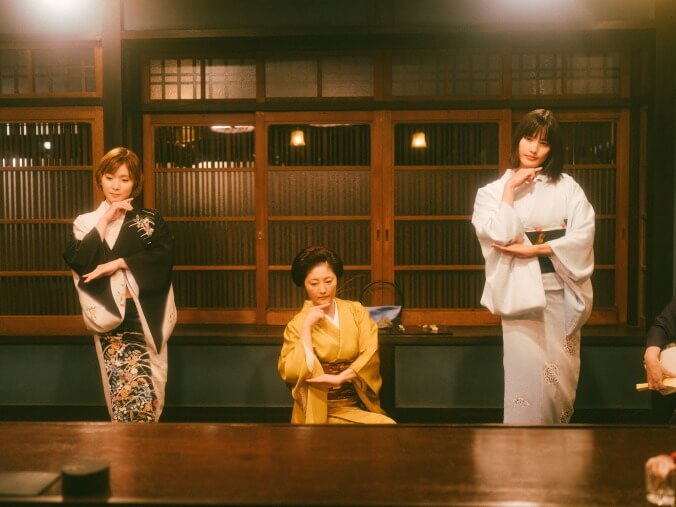The Makanai: Cooking For The Maiko House review: a cozy meditation on care and art
The great Hirokazu Kore-eda helms Netflix’s lush live-action manga adaptation

From the trailer, it’s clear The Makanai: Cooking For The Maiko House is a heart-warmer. And if you’re familiar with the work of Japanese writer-director Hirokazu Kore-eda at all—even just his gorgeous Shoplifters (2018)—you know this will be something special, even if certain biases initially turn you off to the groups of smiling women and plucky theme music that greet you. You also know to expect themes of community care, found family, and a spotlight on life lived in the margins of society—in this case, one that asks the question: How relevant are geisha in 2023 Japan, and how much less relevant does that make the person who cooks for them?
Western Netflix-watching audiences are likely not familiar with the source material for this particular show, the manga Maiko-San Chi No Makanai-San by Aiko Koyama—it sold 2.7 million copies in Japan and won the 65th Shogakukan Manga Award—or its anime adaptation, Kiyo In Kyoto: From The Maiko House. And if that’s the case, they may need to adjust their pacing expectations as well. There is no violence nor betrayal, only subtle arcs and fake-outs. It seems like an entirely different sensibility from most television fare—and it’s a welcome one.
In Makanai, best friends Sumire Herai (Natsuki Deguchi) and Kiyo Nozuki (Nana Mori), inspired by a geiko (geisha) sighting on a school trip, choose to leave behind Kiyo’s spunky, supportive grandmother and their baseball player buddy Kenta in Aomori Prefecture to become apprentice maiko (geishas in training) at Saku house in Kyoto. But it turns out Kiyo is bad at maiko stuff. She can’t hold a flower straight, drum on time, dance competently, or even say the traditional maiko greeting in a way that doesn’t bewilder and borderline disgust Mother Chiyo and Mother Azusa, the heads of the household. As she awkwardly trains, she becomes entranced by the work of Sachiko the makanai (who cooks meals for Saku house) and begins wondering aloud about, for example, incorporating local vegetables into French culinary styles. Kiyo’s bumbling in her maiko lessons leads to her expulsion from the program just as Sumire’s star begins to rise.
Although she’s expelled, Kiyo does not leave—and not just because Sumire begs her to stay. Sachiko sustains a back injury that prevents her from carrying out her duties, and she seeks Kiyo’s assistance with grocery shopping and cooking in exchange for mentorship. Sachiko insists that the most difficult part of maiko cooking is making food taste “normal” to people from disparate regions of the country with their own distinct food cultures. Kiyo is inspired and quickly excels at this. This experience emboldens her to request the role of makanai herself, which she is given, readily.
